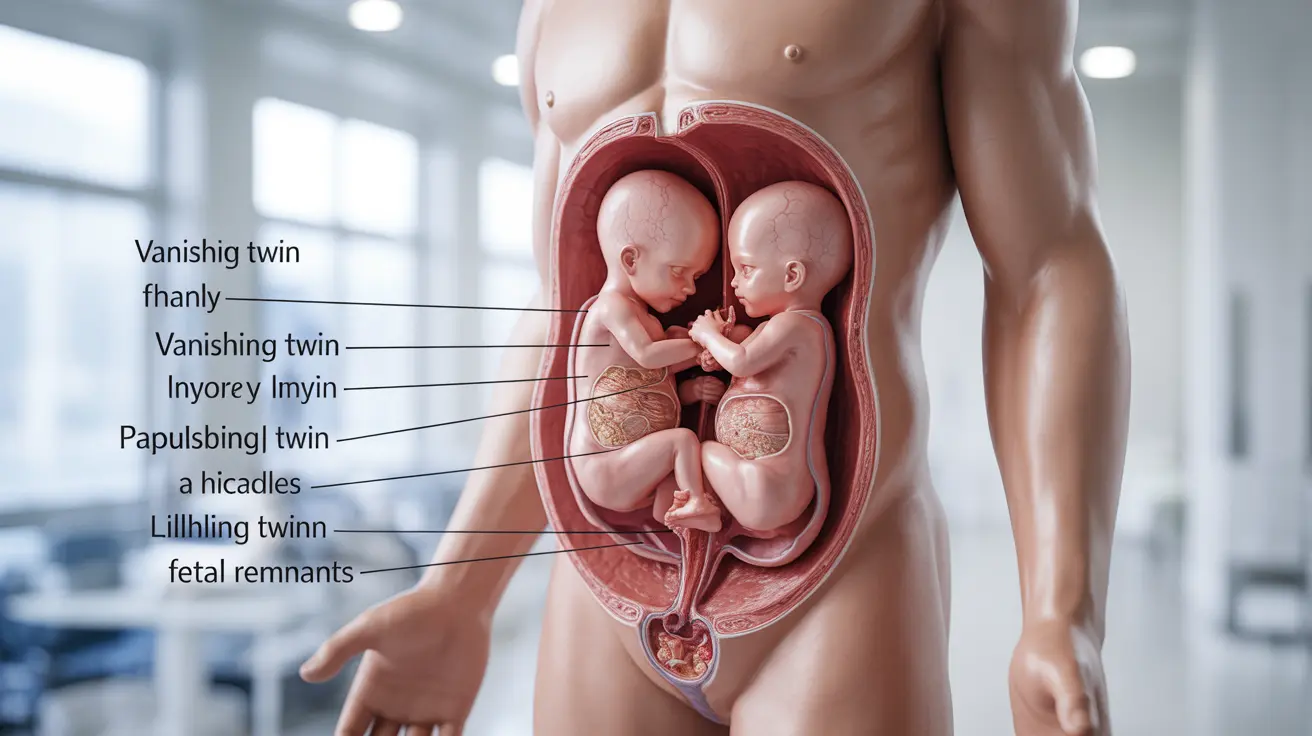An absorbed twin tumor, also known as a parasitic twin or fetus in fetu, is a rare developmental condition that occurs during early pregnancy. This phenomenon happens when one developing twin is partially absorbed by the other, leading to the formation of tumor-like tissue within or attached to the surviving twin's body. Understanding this condition is crucial for both medical professionals and affected families.
While extremely rare, occurring in approximately 1 in 500,000 live births, absorbed twin tumors represent a complex medical condition that requires careful diagnosis and treatment. This article explores the causes, diagnosis, symptoms, and available treatment options for this unusual developmental anomaly.
How Absorbed Twin Tumors Develop
The formation of an absorbed twin tumor typically begins in the early stages of a twin pregnancy. During embryonic development, one twin's growth becomes subordinate to the other, leading to incomplete development and partial absorption by the dominant twin. This process occurs due to various factors:
- Abnormal cell division during early pregnancy
- Inadequate blood supply to one of the developing twins
- Chromosomal or genetic abnormalities
- Complications in the early formation of the embryonic cells
Diagnostic Approaches
Medical professionals use several methods to diagnose absorbed twin tumors, both before and after birth:
Prenatal Diagnosis
During pregnancy, doctors may detect signs of an absorbed twin through:
- Routine ultrasound screenings
- Advanced imaging techniques like MRI
- Regular monitoring of fetal development
- Specialized genetic testing when indicated
Postnatal Diagnosis
After birth, diagnosis might involve:
- Physical examination
- Advanced imaging studies (CT scans, MRI)
- Tissue biopsy when necessary
- Blood tests to check for specific markers
Common Signs and Symptoms
The presence of an absorbed twin tumor can manifest through various symptoms, depending on its location and size:
- Visible mass or growth on the body
- Abdominal distention
- Pressure on surrounding organs
- Digestive or respiratory issues
- Pain or discomfort in the affected area
Treatment Options and Recovery
Treatment for absorbed twin tumors typically involves surgical intervention. The approach depends on several factors:
Surgical Considerations
Doctors carefully evaluate:
- Location and size of the tumor
- Involvement of vital organs
- Patient's overall health
- Potential risks and complications
Recovery Process
The recovery outlook generally includes:
- Post-operative monitoring
- Regular follow-up appointments
- Physical therapy when needed
- Long-term health surveillance
Frequently Asked Questions
What is an absorbed twin tumor and how does it develop during pregnancy?
An absorbed twin tumor develops when one twin in early pregnancy fails to fully develop and is partially absorbed by the surviving twin. This results in tissue masses that can contain various types of tissue, including bone, hair, and sometimes organ tissue.
How can doctors diagnose a parasitic or absorbed twin tumor before or after birth?
Doctors use various diagnostic tools including ultrasound and MRI during pregnancy, and after birth may employ CT scans, physical examinations, and tissue biopsies to confirm the presence and extent of an absorbed twin tumor.
What are the typical signs or symptoms of having a parasitic twin attached to the dominant twin?
Common signs include visible masses or growths, abdominal swelling, pressure symptoms on nearby organs, and potential complications depending on the location of the absorbed tissue.
What treatment options are available for removing an absorbed twin tumor, and what is the recovery outlook?
The primary treatment is surgical removal, with the specific approach depending on the tumor's location and complexity. Recovery typically involves post-operative care, monitoring, and follow-up appointments, with most patients having a positive long-term outlook.
How is a parasitic twin different from conjoined twins and vanishing twin syndrome?
Unlike conjoined twins, where two partially developed fetuses are permanently connected, a parasitic twin involves underdeveloped tissue from one twin being absorbed by the other. Vanishing twin syndrome occurs when one twin disappears completely early in pregnancy, leaving no visible tissue behind.




